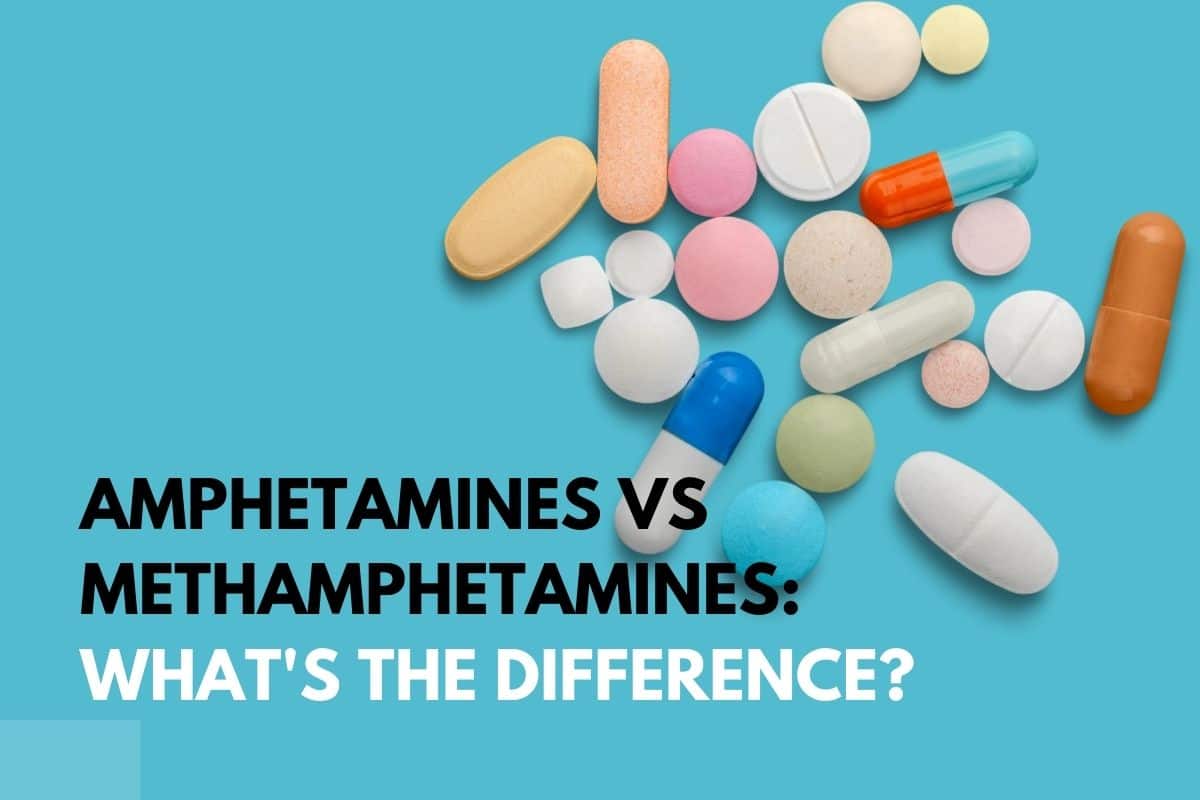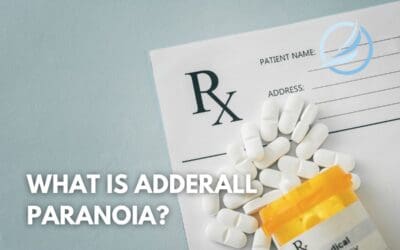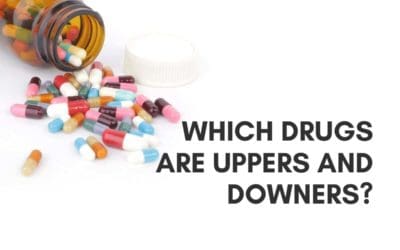No, amphetamine and methamphetamine are not the same things.
M-e-t-h. These four letters aren’t all that distinguish amphetamines and methamphetamines from one another. Although both substances are classified as stimulants or “uppers” and Schedule II drugs, there are meaningful differences in how powerful these drugs are, how addictive they can be, and the long-term consequences of abuse. What are the differences between amphetamines vs methamphetamines? Which one is more dangerous? Here’s everything you need to know about what they are and how these two types of drugs work.
A Brief Look at Amphetamines vs Methamphetamines
First off, let’s establish that both amphetamine and methamphetamine are indeed two distinct types of drugs. You’d be forgiven for thinking otherwise, after all, ‘amphetamine’ is in the name of both substances. Technically, meth is a type of amphetamine, but is classified separately and has been since 2015. The main similarities between the two are 1) their drug classification and 2) their shared potential to be dangerous.
Although both amphetamines and methamphetamines are stimulants, meth…
- Is very rarely used for medical purposes (although it does have some)
- Is more often illegally manufactured, distributed, and consumed
- Is far more potent than amphetamines
- Has effects that are more harmful and longer-lasting than amphetamines
Stimulants: Explained
Stimulants are one of seven types of the seven drug categories. There are both licit and illicit types of stimulants such as caffeine, nicotine, cocaine, and ADHD medication Adderall. As their name implies, these drugs stimulate the body by increasing the rate at which central nervous system signals are sent and received. This translates to increased respiratory and cardiovascular function and unnaturally high levels of dopamine being released into the body which are responsible for the tell-tale markers of a stimulant high:
- Heightened energy levels
- Euphoria
- Increased sociability/self-esteem
- Improved attention span
- Increased sexual desire/performance
- Appetite suppression
While these effects might seem positive, they come at a significant cost. Stimulant use puts immense strain on the body. Even first-time use of this drug can result in a number of adverse effects that cause short and long-term health issues—as well as death. Chronic stimulant abuse will often carry psychological side effects as well such as the development of serious mental illness.
What are Amphetamines?
Amphetamine are primarily composed of prescription stimulants and are the weakest types of stimulants. These pharmaceutical medications are prescribed to treat conditions like ADHD, narcolepsy, and weight loss. As such, amphetamines are typically found in a tablet or capsule form for oral consumption (though individuals abusing these medications may snort, smoke, or inject them). Common types of amphetamines include:
- Adderall
- Dexedrine
- Vyvanse
While all (legal) amphetamines are prescriptions, not all prescription stimulants are amphetamines.
Amphetamine Abuse
Amphetamines are most commonly abused by teenagers and young adults who use them as “study drugs” to enhance focus, stay awake for longer, and boost cognitive functioning. However, the nature of how amphetamines work also means that those who take this substance without a medical need may experience a small high from the excess dopamine that is released.
The effects of amphetamines can last from as little to one minute or up to 4-6 hours, depending on the substance. Abusers must then contend with the long-lasting physiological effects (racing heart, tremors, blurry vision, impaired motor function) which can persist for up to 12 hours.
Amphetamine Addictiveness
The addiction potential of medicinal amphetamines is highest for non-medical use. However, even those with a prescription may experience addiction if they frequently take too-large doses. For the most part, legitimate use (i.e. those with a medical need) are unlikely to become addicted from following dosage instructions. Illegally manufactured amphetamines pose much higher risks to both medical and non-medical users as they can be cut with all sorts of harmful substances which can significantly increase the drug’s effects and the likelihood of causing addiction).
What are Methamphetamines?
Methamphetamine is a kind of amphetamine. The two have similar molecular structures, similar mechanisms of how they work, and therefore have similar effects such as euphoria and increased energy. Meth both increases the levels of dopamine and blocks its reuptake, which leads to extremely high concentrations of dopamine in the brain. However, meth is much more powerful than prescription stimulants and other amphetamines in general. This in addition to the intention with which meth is used are the greatest differences between the two substances.
The Different Forms of Methamphetamine
Meth goes by many names and can be used in a number of methods: smoked, snorted, swallowed, or injected. Both what it’s called and the ways meth is used are largely determined by its physical form.
The most common form of meth is a fine white or off-white powder commonly referred to as “speed”). It is often snorted and the least potent version of the drug (~10%). Base is an oily yellowish or brownish paste-like substance whose version of meth has a slightly higher purity and potency (~20%), is often injected or swallowed. Crystal meth (also known as “ice”)is a different form of meth that looks like a crystal-like rock. It is a much purer, and therefore stronger, form of meth (~80%) that is far more addictive and dangerous. It is most often smoked or injected.
Meth vs. Other Types of Stimulants
Although methamphetamine is a stimulant, all of which function by increasing the levels of dopamine production, it still differs from other stimulants such as cocaine. For one, meth increases dopamine production at a drastically greater rate. Another major difference is the speed at which the substance is metabolized. Cocaine is very quickly metabolized and therefore the effects wear off rapidly. The duration of time that meth will remains active in the human body is much longer. It can take 12 hours or longer for 50% of a dose of meth to be metabolized, whereas cocaine’s half-life is only about 1 hour.
Which is More Deadly: Amphetamine or Meth Addiction?
When it comes to amphetamines vs methamphetamines on addiction potential, both carry a signficant amont of risk. Both drugs result in an innaturally high levels of dopamine output which inherently puts users at a risk of developing tolerance and dependence (not to mention the risk of overdose, and other consequences such as respiratory issues, health problems, and severe dental damage). However, the increased potency of crystal meth also makes addiction to it even more dangerous compared to addiction to prescription amphetamines.
Getting Help for Stimulant Use Disorder
Cocaine is the most widely abused stimulant drug (5.5 million users in the U.S. in 2019), followed by prescription stimulant use (4.9 million) and meth (2.9 million). Although meth users make up the smallest potion of total stimulant abuse, concerning statistics have shown that meth use has increased drastically between 2011 and 2018 and that it is tied with cocaine as the largest source of addiction (both are responsible for 1 million addicted users in 2019 according to SAMHSA).
Additionally, there is no knowledge just yet of how COVID-19 has affected these numbers or the numbers of prescription amphetamine use as well. Could students who have been forces into 100% online learning be relying on these drugs for focus even more than before? What we do know is that anyone who is struggling with stimulant abuse could benefit from professional help. Our stimulant addiction treatment program is designed to help individuals overcoming addiction from cocaine, amphetamines, methamphetamines, and any other stimulants. Don’t delay, reach out to get yourself or your loved one enrolled in an effective treatment program today.

































